Progressive Waves
What you should know
⇒ Wave motion transfers energy and information, without transferring matter
⇒ Vibrations/oscillations in transverse waves are perpindicular to the direction of energy transfer (i.e. the vibrations/oscillations are up and down) e.g. electromagnetic waves
⇒ Vibrations/oscillations in longitudinal waves are in the same direction as energy transfer (i.e. left to right) e.g. sound waves
⇒ Frequency (measured in Hz) is the number of wave cycles per second and amplitude is the maximum displacement from the equilibrium position
⇒ The wave equation states that the speed of a wave (in ms-1) equals its frequency (in Hz) multiplied by its wavelength (in m):
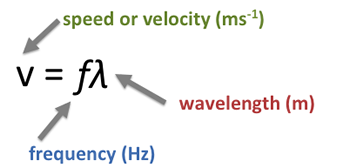
⇒ Refraction is the change of wave speed and direction at a boundary
⇒ Reflection occurs when a wave bounces off a surface (angle of reflection equals angle of incidence)
⇒ Total internal reflection is the complete reflection of a ray of light within a medium such as water or glass from the surrounding surfaces back into the medium
⇒ Diffraction is the spreading of waves around an obstacle or through a gap

Overview of Progressive Waves
⇒ Waves are caused by a vibrating source
⇒ Progressive waves is an oscillation or vibration that transfers energy and information
⇒ Only energy is transferred, although the substance the wave moves through is disturbed
⇒ The particles of the substance ocillate in their fixed position, but don't move to a different place
How do particles move in waves
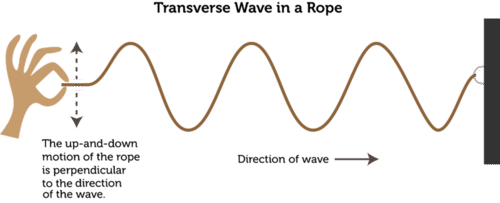
⇒ Waves on a string cause particles to vibrate perpendicular to the direction that the energy is transferred
⇒ The amplitude is the maximum displacement from the particle's undisturbed position and the larger the amplitude is, the more energy that is transferred
⇒ The distance between the wave peaks is the wavelength (i.e. it is the distance between two equivalent point in successive cycles)
⇒ The frequency of a wave is measured in hertz and it is the number of cycles or vibrations pers second
⇒ The time cycle is the period of a wave and is measured in seconds
- A wave of 10Hz has 10 cycles per second (each taking 0.1 seconds
⇒ You can calculate the period of the wave using the following formula:
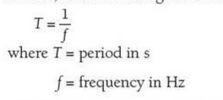
⇒ The time period for the following wave is 0.8s:

The Wave Equation
⇒ As speed is calculated by dividing the distance by the time, we use the same formula for wave speed: the wavelength (the distance travelled in one cycle) divided by the period (the time to complete one cycle, in seconds)
⇒ By understanding that frequency is the number of cycles per second, we can determine the wave equation as follows:

Phase Difference
⇒ When a wave is travelling, the particles are constantly moving
⇒ The phase of a wave is the fraction of the cycle a particle has passed through relative to a given starting point
- For example, X and Y on the following wave are half a wavelength out of phase
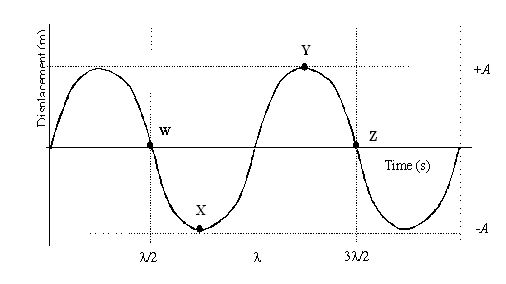
⇒ Particles in parts of a wave that are moving at the same speed and in the same direction are in phase
- Points that are whole wavelengths apart move in phase
⇒ Particles are out of phase if they are at different points in their cycle at a particular time
⇒ Particles in parts of a wave that move in opposite directions and at exactly the same speed are moving in antiphase, or completely out of phase
- Points that are half a wavelength, 1.5, 2.5, etc. wavelengths move in antiphase
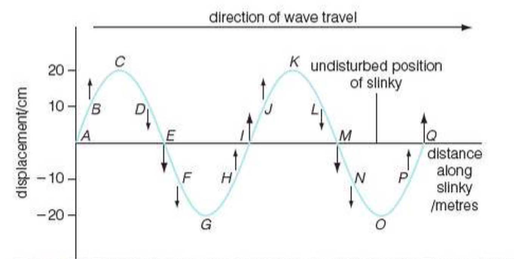
⇒ Points E and M are in phase, whereas points E and I are moving in antiphase
⇒ Any phase difference can be measured as an angle in degrees or radians
- For example we can say the phase change of a wave during one complete cycle is 360° or 2Π

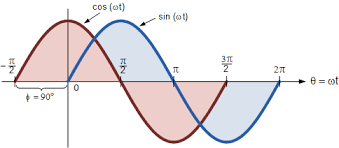
⇒ As you can see, quarter a cycle is 90° or Π/2, half a cycle is 180° or Π, three-quarters a cycle is 270° or 3Π/2.
The Maths of Phase Differences

⇒ The motion of this wave is sinusoidal with a time period of T
- When time t, equals T, one cycle has been completed so the valye of the angle in the sine function must be 2Π
- In other words, when t = T, the angle is 2Πt/T
⇒ The vertical displacement of the particles in the wave can be determined using the following equation:
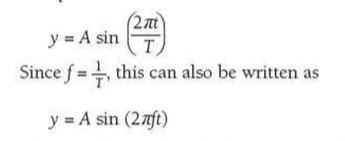
- y = the vertical displacement at a time t
- A = the amplitude of the wave
- f = frequency of the oscillations
⇒ When the oscillations are out of phase, we describe thise phase difference as a fraction of the angle 2Π
- Points half a wavelength apart have a phase difference of Π and points three-quarters of a wavelength apart have a phase difference of 3Π/2
⇒ The general formula for determining the phase difference of two points separated by a distance (x) on a wave is as follows:

⇒ Phase difference can also be talked of in cycles e.g. a phase difference of 1/4 is the same as a phase difference of Π/2 radians

Phase change on reflection
⇒ When a wave reflects off the surface of a denser medium, it undergoes a phase change of 180 degrees
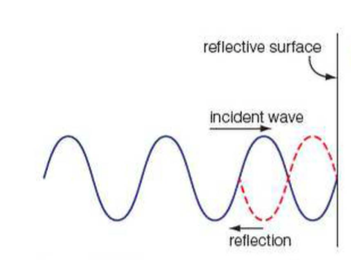
Extra
⇒ Also see our notes on: